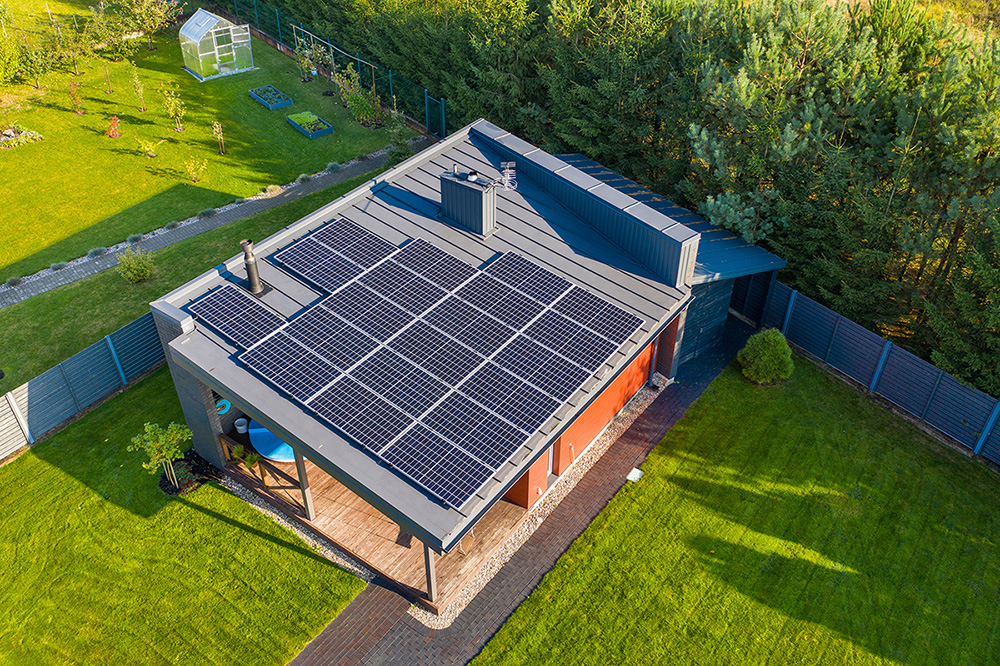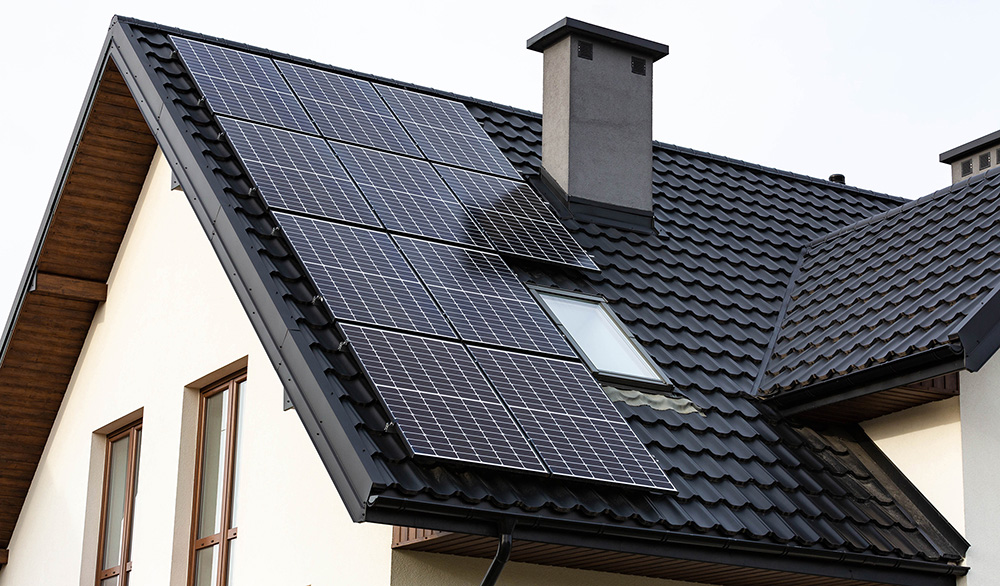Performance of solar panels
The performance of photovoltaics depends on multiple realities, one of which is the sun. If it's shining, approximately 1kW of solar energy per square meter hits the surface of the earth in our geographic conditions. Photovoltaics can convert about 17% of such energy into electricity. This performance is measured in wattpeak (Wp) units and indicates how much wattage the panel produces if it is fully illuminated by the sun's rays at a given time. To give you an idea: three to four solar panels can produce roughly 1MWh of electricity each year. However, the current performance is particularly significantly influenced by two factors:
Sunshine – with a lower rate of sunshine, the produced current also decreases. With high cloudiness, the panel's performance can be reduced by up to 95% compared to ideal conditions. The degree of sunshine varies depending on the seasons, but also the latitude. So, for example, we will see better conditions in southern and central parts of Europe and worse ones in Scandinavia.
Temperature – a higher temperature does not automatically equal the higher performance of solar panels. The ideal temperature is about 25 degrees Celsius. During hot summer days, when the temperature reaches up to 50 degrees Celsius, the photovoltaic performance drops by up to 20%. You also need to expect lower performance during the winter months.

Size of solar panels
In our offer, you will find solar panels of various sizes. The most common ones are 170 to 230 cm in height, 100 to 115 cm in length, and about 3 to 4 cm in width. So the standard surface of a normal panel is between 170 and 265 square centimeters. Differences in the efficiency of solar panels with a difference of tens of centimeters in the total surface vary in the order of units of percent. Efficiency is about 17% for the smaller ones and 21% for the larger ones. When it comes to installation and roof loading, consider that the solar panel is not lightweight, since their average weight is between 20 and 30 kilograms.
Number of solar panels
The total number of solar panels you purchase should be influenced primarily by two parameters: the spaces you have at your disposal and the desired performance of your entire photovoltaic system. There is, of course, a simple rule: the more panels you install, the more performance you can expect. One photovoltaic panel can produce approximately 250 to 450 kilowatt-hours of energy per year. On its own, it can cover the annual consumption of an energy-saving fridge and dishwasher.

Calculation of the approximate annual production of electricity from solar panels
Considering an average annual solar panel output of 300 Wp, we simply estimate the performance of the entire system in one year, depending on the number of cells:
Maximum performance without the need for a license
When purchasing a higher number of panels, your household will be significantly closer to energy self-sufficiency, especially between March and November, when the conditions for generating electricity from photovoltaics are the best. Keep in mind, however, that the power output of a photovoltaic power plant should be no more than 10 000 Wp, or 10 kWp. That value is equivalent to roughly 33 photovoltaic panels. Up to that limit, the owner is not subject to the obligation to hold a license to operate a solar power plant. In addition, for the same limit (10 kWp), the income tax exemption applies if you want to supply electricity to the distribution network.
Calculate and consider a sale to the distribution network
When considering the performance, size, and number of solar panels, we also recommend going through the power consumption records of the last few years. Also, consider if you want to sell some of your solar power to the distribution network. With the help of the table a few lines above, it's easy to calculate how much of your household's electricity consumption photovoltaics will be able to cover.


 Paulina
Paulina